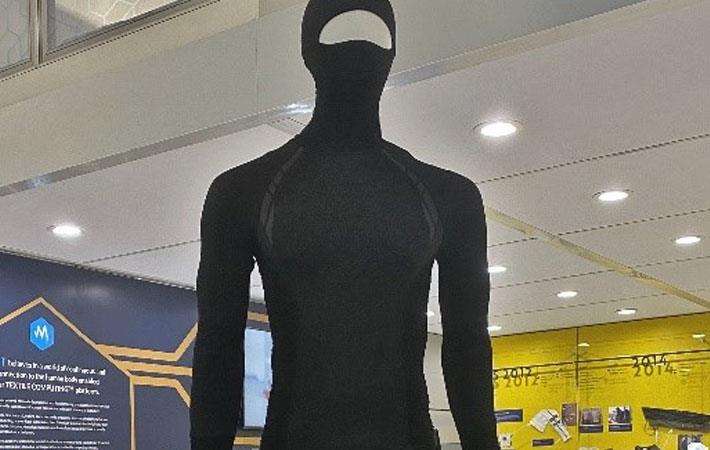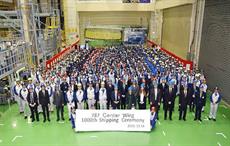Myant, pioneers in textile computing, and Helly Hansen, the global technical and safety apparel brand, unveiled a line of active thermal workwear at the recently held CES 2020, which dynamically regulates body temperature for workers in cold climates. CES has served as the proving ground for innovators and breakthrough technologies for 50 years.
The garments in this line (including a base layer top, leggings, socks, a balaclava, and gloves) are wire-free, embedded with textile sensors that can measure body temperature and react by actively delivering heat through the textile to maximise comfort and enhance productivity. Active thermal workwear is one of the first applications of Myant’s larger vision to transform the future of work via textiles that can sense and react to the human body, forging a deeper connection between a worker and their body, their team, the predictive power of AI, and their IoT-enabled workplaces. The transformation of connectedness at work will ultimately create safer, healthier and more productive work environments for all, according to a press release by Myant.Myant, pioneers in textile computing, and Helly Hansen, the global technical and safety apparel brand, unveiled a line of active thermal workwear at the recently held CES 2020, which dynamically regulates body temperature for workers in cold climates. CES has served as the proving ground for innovators and breakthrough technologies for 50 years.#
While enterprises have been implementing biometric solutions for a number of years, the challenges that have been addressed have largely been related to biometric security. While biometrics have certainly created more secure workplaces, there still exists a tremendous opportunity to measure and react to the human body in order to optimize productivity on both an individual and enterprise-wide level. This is a particularly meaningful issue for highly regulated heavy industries where rules often restrict workers from wearing “devices” on their bodies as a safety measure.
Recognising these challenges, Myant has been applying its unique expertise in textiles that can sense and react to the human body to create biometric solutions for workers (particularly in heavy industry) that help manage and actively optimize productivity and safety. One such development along these lines has been a project with Helly Hansen on a line of connected apparel that dynamically regulates body temperature for outdoor workers through a combination of body temperature sensing and active delivery of heat, all in wire-free textile form factors. The line-up that was unveiled at CES 2020 included a base layer top, leggings, socks, a balaclava, and gloves that work together to dynamically regulate body temperature for cold-climate workers. This ability to manage comfort for workers without adding bulk that may impede movement and affect productivity, and delivered in a form factor that meets strict regulatory requirements, has the potential to change the way work is done in cold climates.
This line of garments is just one example of how closing the loop via textiles that both sense and react can change how workers stay safe and productive in a world connected by textiles. Myant and Helly Hansen are also developing a safety shoe that can measure posture and conduct gait analysis in order to track, anticipate and potentially prevent same-level slip, trips and falls on the jobsite. Another application would be connected garments that continuously track ECG, heart rate variability, movement and other measures to assess worker fatigue, enabling enterprises to potentially prevent tired workers from hurting themselves or others. The HYDRO_BOT active moisture management technology at the centre of Myant’s recently announced partnership with the Swiss company Osmotex also has tremendous potential, enabling garments that can actively transport sweat away from the body to help keep core temperature within an acceptable range.
Fibre2Fashion News Desk (GK)


